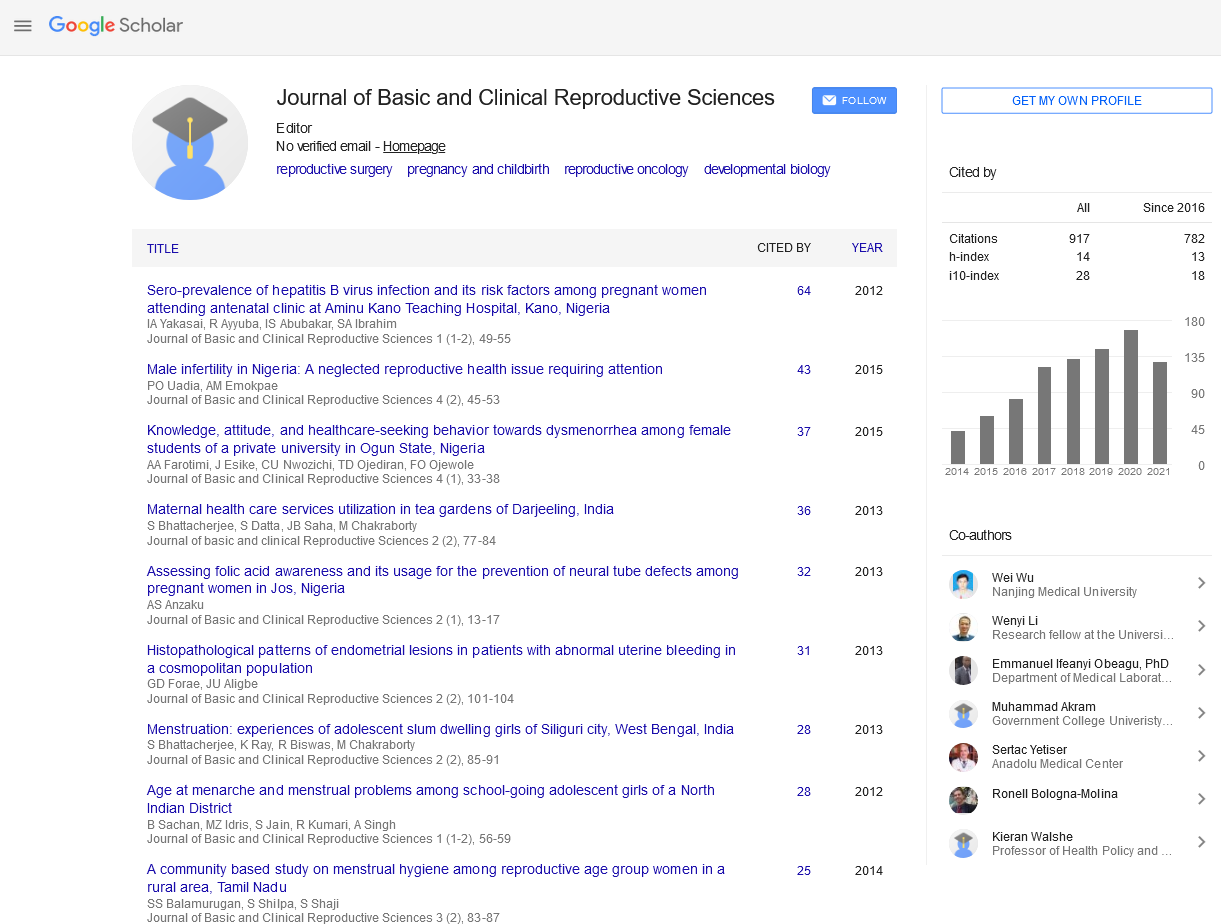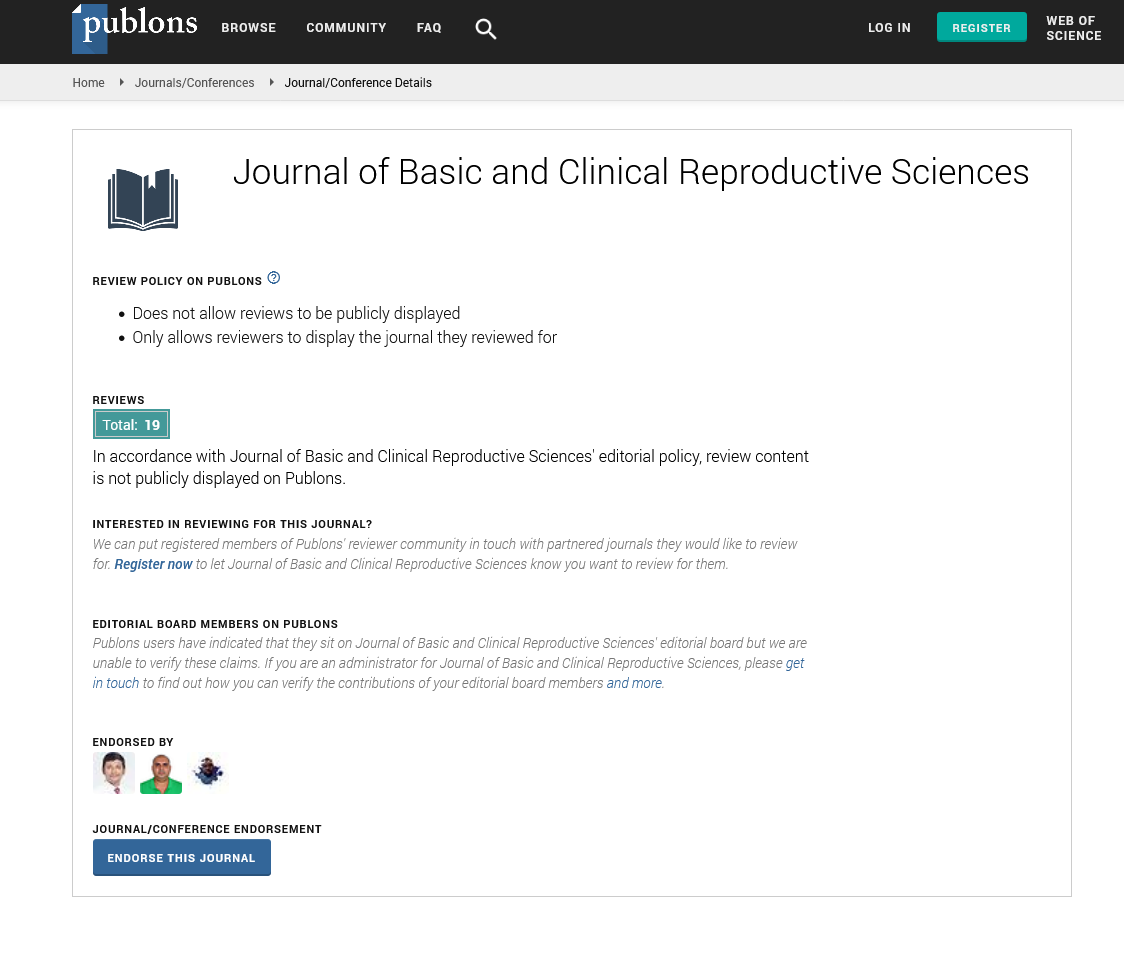Commentary - Journal of Basic and Clinical Reproductive Sciences (2023) Volume 12, Issue 4
Uterine Cancer and Hormonal Influences from Estrogen Metabolism to Hormone Replacement Therapy
Received: 31-Jul-2023, Manuscript No. JBCRS-23-114419; Editor assigned: 02-Aug-2023, Pre QC No. JBCRS-23-114419 (PQ); Reviewed: 16-Aug-2023 QC No. JBCRS-23-114419; Revised: 23-Aug-2023, Manuscript No. JBCRS-23-114419 (R); Published: 30-Aug-2023
This open-access article is distributed under the terms of the Creative Commons Attribution Non-Commercial License (CC BY-NC) (http://creativecommons.org/licenses/by-nc/4.0/), which permits reuse, distribution and reproduction of the article, provided that the original work is properly cited and the reuse is restricted to noncommercial purposes. For commercial reuse, contact reprints@pulsus.com
Description
Uterine cancer, also known as endometrial cancer, is a prevalent gynecological malignancy affecting women worldwide. Uterine cancer, primarily originating in the lining of the uterus (endometrium), is one of the most common gynecological cancers. Uterine Cancer. Endometrial Cancer is the most common type, originating in the endometrium, the inner lining of the uterus. A rare and more aggressive form of uterine cancer, developing in the uterine muscle or other uterine tissues is uterine sarcoma .The most common symptom, including heavy or prolonged periods, postmenopausal bleeding, and bleeding between periods. Pain in the pelvis or lower abdomen may occur in advanced stages. Obesity is a major risk factor, so adopting a healthy lifestyle that includes a balanced diet and regular exercise can reduce the risk. If considering hormone replacement therapy, combined HRT may be a safer option. Women should be aware of the symptoms of uterine cancer and promptly report any abnormal bleeding to their healthcare providers. Routine gynecological check-ups can help detect uterine cancer in its early, more treatable stages. Diagnostic methods include transvaginal ultrasound, endometrial biopsy, Dilation and Curettage (D&C), and imaging studies like MRI or CT scans.
Treatment
Laparoscopic and robotic-assisted surgeries have become more common for the removal of uterine tumors and lymph nodes. These techniques offer quicker recovery times and reduced scarring compared to traditional open surgery. Intensity-Modulated Radiation Therapy (IMRT) allows for more precise targeting of cancer cells while sparing healthy tissue. This reduces side effects and improves treatment outcomes. Molecular profiling of tumors has led to the development of targeted therapies that can specifically attack cancer cells. For example, drugs like pembrolizumab and lenvatinib have shown promise in treating advanced uterine cancer. Hormone therapy with progesterone can be an effective treatment option. Drugs like pembrolizumab and nivolumab are being used to boost the immune system’s response against cancer cells. Immunotherapy has shown promise in treating some advanced uterine cancers. Participation in clinical trials allows patients to access cutting-edge treatments that may not be widely available. These trials test new drugs, therapies, and treatment combinations to improve outcomes for uterine cancer patients. Advances in genomics and molecular profiling enable oncologists to tailor treatment plans based on the specific genetic characteristics of a patient’s tumor.
Fertility preservation
For younger women who wish to preserve their fertility, some surgical approaches may allow for the removal of cancerous tissue while sparing the uterus. In Vitro Fertilization (IVF) and embryo preservation can also be options before cancer treatment. Sentinel lymph node mapping is a technique used to identify and remove only the lymph nodes most likely to contain cancer cells, reducing the risk of complications associated with extensive lymph node dissection. Palliative care and supportive services have improved to help patients manage symptoms and side effects, improve quality of life, and provide emotional and psychological support throughout the treatment process.
Conclusion
Uterine cancer is a significant health concern for women, but understanding its risk factors, symptoms, and prevention strategies can empower individuals to take proactive steps toward early detection and prevention. With timely diagnosis and appropriate treatment, uterine cancer can be effectively managed, improving the chances of a successful outcome and a better quality of life for affected individuals. As the field continues to evolve, collaboration between researchers, clinicians, and patients remains crucial to advancing our understanding and treatment of this complex disease.


